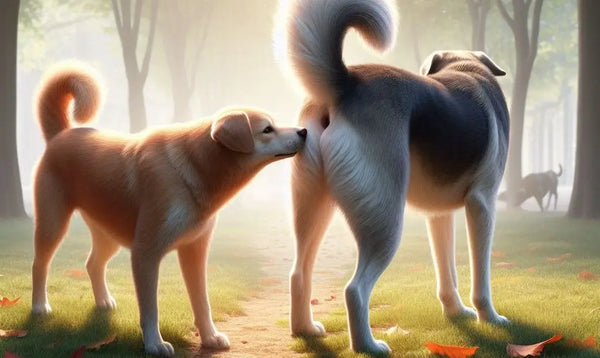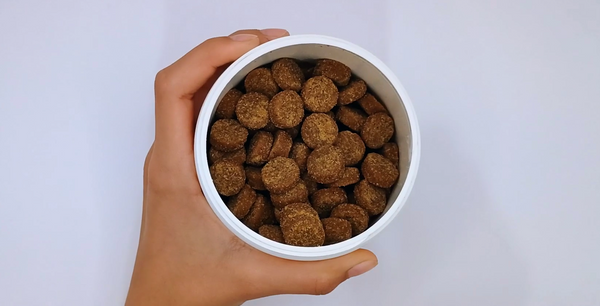
¿Por qué los perros se huelen el trasero unos a otros? El saludo canino asqueroso pero crucial
Para el ojo humano, la visión de dos perros oliéndose el trasero puede parecer cómica, incluso francamente asquerosa. Pero para nuestros compañeros peludos, este comportamiento aparentemente extraño es una parte esencial de la comunicación y la interacción social canina. Es su forma de intercambiar información, establecer jerarquías sociales e incluso formar amistades. Entonces, profundicemos en el fascinante mundo de olfatear el trasero de los perros y descubramos las razones detrás de este ritual de saludo único.
Un olfato para la información: el poder del olor
Los perros poseen un increíble sentido del olfato, que se estima que es entre 10.000 y 100.000 veces más sensible que el nuestro. Sus narices actúan como sofisticados detectores químicos, captando matices sutiles en los olores que pasamos por alto por completo. Esta aguda capacidad olfativa juega un papel crucial en sus interacciones sociales, especialmente durante esa primera olfateada crucial.
Los sacos anales: un cóctel químico de pistas
Cerca del ano de un perro hay dos pequeños sacos llamados glándulas anales. Estos sacos contienen una potente mezcla de sustancias químicas, que incluyen feromonas, hormonas y enzimas digestivas. La secreción del saco anal de cada perro tiene un aroma característico único, como una huella química personalizada. Cuando un perro huele el trasero de otro perro, esencialmente está leyendo este mensaje químico, obteniendo una gran cantidad de información.
¿Que hay en el menu? Decodificando hábitos dietéticos
Las secreciones del saco anal revelan pistas sobre la dieta de un perro. Lo que ha estado comiendo tu cachorro deja su huella en el olor, lo que permite a otros perros identificar rivales potenciales que podrían compartir fuentes de alimento similares. Esta información puede ayudarlos a navegar en las interacciones sociales, especialmente en situaciones competitivas como parques para perros o hogares con varios perros.
Identidad de género y estatus reproductivo: desvelando los secretos
Las secreciones del saco anal también contienen hormonas que revelan el sexo y el estado reproductivo del perro. Las perras en celo emiten olores específicos que atraen a parejas potenciales, mientras que los machos pueden identificar si una hembra es receptiva. Esta información juega un papel crucial en la reproducción canina y ayuda a mantener el orden social dentro de las manadas.
Control de salud: detectar problemas potenciales
El olor de las secreciones del saco anal de un perro también puede indicar su salud general. Los cambios de olor pueden indicar problemas potenciales como infecciones, problemas digestivos o incluso estrés. Al olfatearse unos a otros, los perros pueden identificar posibles problemas de salud en sus compañeros, incitándolos a buscar atención o ajustar su comportamiento en consecuencia.
Dominio y jerarquía: establecimiento del orden social
La forma en que los perros se huelen el trasero también puede revelar una jerarquía social. Los perros dominantes suelen iniciar el olfateo, mientras que los perros sumisos esperan su turno. La duración y la intensidad del olfateo también pueden indicar dominio y sumisión, lo que ayuda a establecer el orden social dentro de una manada o grupo.
Amistad y reconocimiento: más que un simple saludo
Si bien la recopilación de información es crucial, el ritual de olfatear el trasero también juega un papel en la construcción de amistades y el reconocimiento de compañeros familiares. Los perros pueden recordar los olores de otros perros que han conocido antes, y un olfateo amistoso puede reavivar un vínculo olvidado hace mucho tiempo.
Más allá del trasero: otros aromas de interés
Si bien la parte trasera es un lugar privilegiado para obtener información olfativa, los perros también olfatean otras áreas como las orejas, las patas y los genitales en busca de pistas adicionales sobre sus homólogos caninos. Cada parte del cuerpo tiene su propia firma olfativa única, que se suma a la imagen general del otro perro.
Respetar el olfateo: dejar que los perros sean perros
Aunque pueda parecernos extraño, el ritual de olfatear el trasero es una parte natural e importante de la comunicación canina. Así es como recopilan información, establecen orden social y construyen relaciones. Entonces, la próxima vez que vea a su perro absorto en este comportamiento aparentemente extraño, recuerde que simplemente está participando en una parte esencial de su mundo social. Si bien es importante mantener una higiene adecuada y desalentar el olfateo excesivo en contextos inapropiados, permitir que su perro participe en este comportamiento natural puede ayudarlo a navegar las interacciones sociales de manera más efectiva y construir vínculos fuertes con otros perros.

